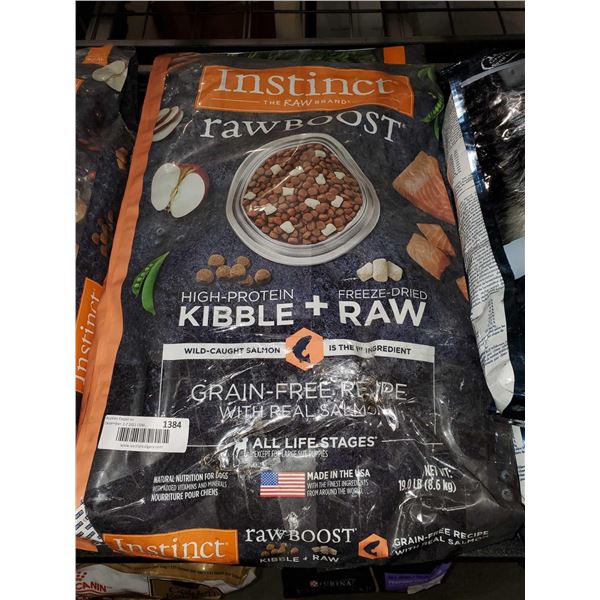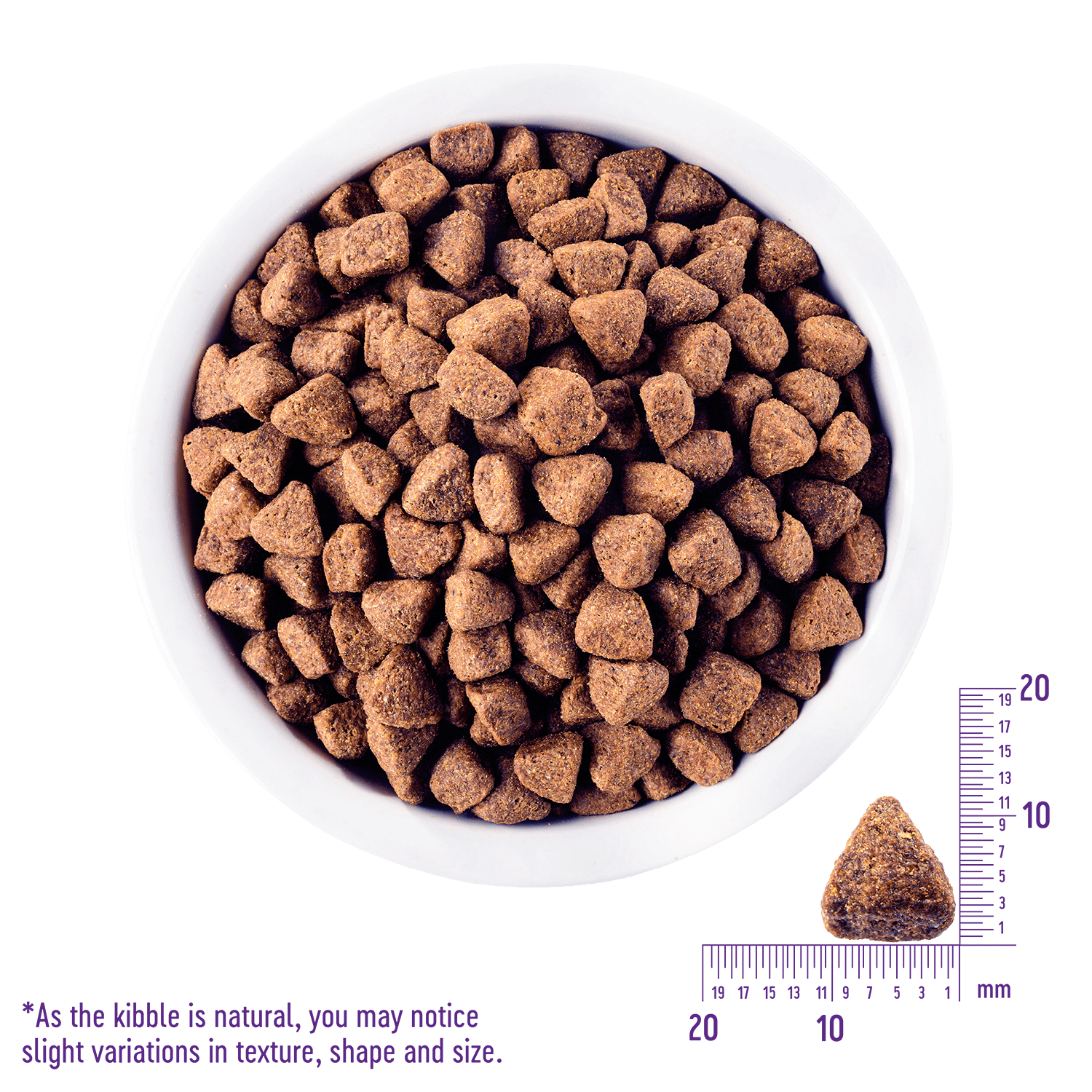
High-Protein Kibble: Fueling Peak Performance in Working Dogs
Working dogs are the athletes of the canine world. Whether they’re herding livestock, assisting law enforcement, competing in agility trials, or providing vital support as service animals, these dogs demand a diet that can keep pace with their rigorous lifestyles. High-protein kibble has emerged as a popular and effective way to meet the unique nutritional needs of working dogs.
Understanding the Nutritional Demands of Working Dogs
Working dogs expend significantly more energy than their sedentary counterparts. Their bodies require a steady supply of nutrients to:
- Fuel Muscle Activity: Protein is the building block of muscle tissue. Working dogs need ample protein to repair muscle damage, build new muscle mass, and sustain energy during intense activity.
- Maintain Energy Levels: While carbohydrates provide quick energy, protein offers a more sustained energy source, preventing crashes and promoting endurance.
- Support Joint Health: The constant impact and stress on joints can lead to wear and tear. Certain proteins and amino acids contribute to cartilage health and reduce inflammation.
- Boost Immune Function: A robust immune system is essential for working dogs, who are often exposed to various environments and potential pathogens. Protein plays a crucial role in immune cell production and function.
- Promote Coat and Skin Health: Healthy fats and proteins contribute to a shiny coat and healthy skin, which is particularly important for dogs working outdoors in diverse weather conditions.
Why High-Protein Kibble?
High-protein kibble offers several advantages for working dogs:
- Concentrated Nutrition: Kibble is a convenient and calorie-dense food source, making it easy to provide the necessary nutrients in a manageable serving size.
- Complete and Balanced: Reputable kibble brands are formulated to meet the nutritional standards established by organizations like the Association of American Feed Control Officials (AAFCO). This ensures that your dog receives all the essential vitamins, minerals, and amino acids.
- Shelf-Stable and Portable: Kibble is easy to store and transport, making it ideal for working dogs who travel or work in remote locations.
- Dental Health: The crunchy texture of kibble can help reduce plaque and tartar buildup, promoting better dental hygiene.
What to Look for in High-Protein Kibble
When choosing a high-protein kibble for your working dog, consider the following factors:
-
Protein Source:
- Animal-Based Proteins: Look for kibble that lists high-quality animal-based protein sources as the first few ingredients. Examples include chicken, turkey, beef, lamb, fish, and eggs.
- Protein Percentage: Aim for a kibble with a protein content of at least 30%, and potentially higher (35-40%) for dogs with extremely high energy demands.
- Avoid Excessive Plant-Based Proteins: While some plant-based proteins (like peas or lentils) can be included, they should not be the primary protein source. Animal-based proteins are generally more digestible and provide a more complete amino acid profile.
-
Fat Content:
- Healthy Fats: Working dogs need a good source of healthy fats for energy and coat health. Look for ingredients like fish oil, flaxseed, sunflower oil, or chicken fat.
- Fat Percentage: A fat content of 18-25% is generally recommended for working dogs, depending on their activity level.
-
Carbohydrates:
- Complex Carbohydrates: Opt for kibble that contains complex carbohydrates like sweet potatoes, brown rice, oats, or barley. These provide a sustained energy release.
- Limit Simple Sugars: Avoid kibble with excessive amounts of corn, wheat, or soy, as these can be harder to digest and may cause digestive issues in some dogs.
-
Additional Nutrients:
- Joint Support: Look for ingredients like glucosamine and chondroitin, which can help support joint health and reduce inflammation.
- Antioxidants: Antioxidants like vitamin E, vitamin C, and blueberries can help protect against cellular damage caused by oxidative stress.
- Probiotics and Prebiotics: These promote gut health and can improve nutrient absorption.
-
Ingredient Quality:
- Whole Foods: Choose kibble that prioritizes whole, recognizable ingredients.
- Avoid Artificial Additives: Steer clear of artificial colors, flavors, and preservatives, as these can be detrimental to your dog’s health.
-
AAFCO Statement:
- "Complete and Balanced": Ensure that the kibble has an AAFCO statement indicating that it is "complete and balanced" for your dog’s life stage (e.g., adult maintenance or all life stages).
Transitioning to High-Protein Kibble
When switching your working dog to a high-protein kibble, it’s essential to do so gradually to avoid digestive upset.
- Gradual Mixing: Start by mixing a small amount of the new kibble with your dog’s current food.
- Increase Proportion: Gradually increase the proportion of the new kibble over a period of 7-10 days, while decreasing the amount of the old food.
- Monitor Stool: Keep an eye on your dog’s stool consistency. If you notice any diarrhea or vomiting, slow down the transition process.
Feeding Guidelines and Considerations
- Follow Feeding Guidelines: Use the feeding guidelines on the kibble bag as a starting point, but adjust the amount based on your dog’s individual needs and activity level.
- Monitor Body Condition: Regularly assess your dog’s body condition. You should be able to feel their ribs without excessive fat covering them. Adjust the amount of food accordingly.
- Multiple Meals: Consider feeding your working dog multiple smaller meals throughout the day, rather than one large meal. This can help maintain stable energy levels and prevent digestive issues.
- Fresh Water: Always provide your dog with access to fresh, clean water.
- Consult Your Veterinarian: If you have any concerns about your dog’s diet or health, consult with your veterinarian. They can provide personalized recommendations based on your dog’s individual needs.
Potential Benefits of High-Protein Kibble for Working Dogs
- Increased Muscle Mass and Strength: High-protein diets can help working dogs build and maintain lean muscle mass, which is essential for optimal performance.
- Improved Endurance: Protein provides a sustained energy source, allowing working dogs to maintain their stamina and perform at their best for longer periods.
- Faster Recovery: Protein helps repair muscle damage and reduce inflammation, which can speed up recovery after intense activity.
- Enhanced Cognitive Function: Certain amino acids found in protein can support brain function and improve focus and alertness.
- Healthier Coat and Skin: Adequate protein intake contributes to a shiny coat and healthy skin, which is particularly important for dogs working outdoors.
Potential Drawbacks of High-Protein Kibble
- Kidney Concerns (Myth Debunked): It’s a common misconception that high-protein diets can harm the kidneys. However, research has shown that high-protein diets are generally safe for dogs with healthy kidneys. If your dog has pre-existing kidney disease, consult with your veterinarian before switching to a high-protein diet.
- Cost: High-quality, high-protein kibble can be more expensive than lower-quality options. However, the investment in a better diet can pay off in the long run by improving your dog’s health and performance.
- Digestive Issues: Some dogs may experience digestive issues when first transitioning to a high-protein diet. This can usually be resolved by gradually introducing the new food and ensuring that it is easily digestible.
Conclusion
High-protein kibble can be a valuable tool for fueling peak performance in working dogs. By choosing a high-quality kibble with a focus on animal-based proteins, healthy fats, and complex carbohydrates, you can provide your working dog with the nutrients they need to thrive. Remember to transition gradually, monitor your dog’s body condition, and consult with your veterinarian if you have any concerns. With the right diet, your working dog will be ready to tackle any challenge with energy, strength, and enthusiasm.

